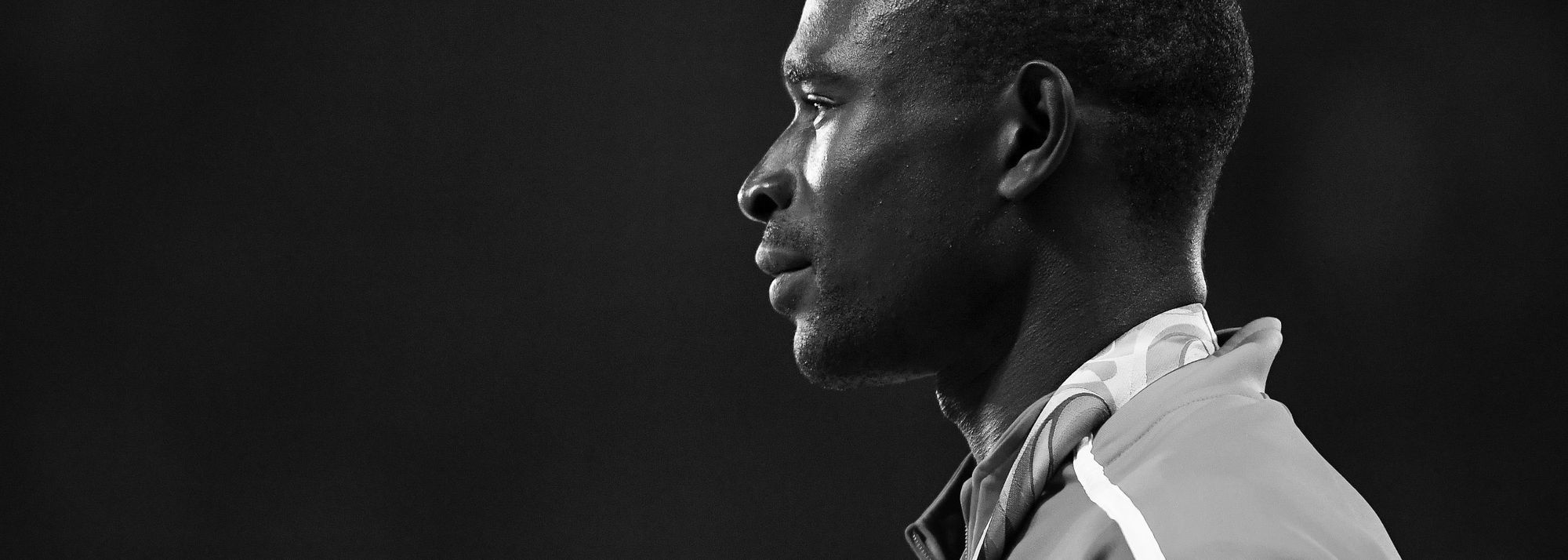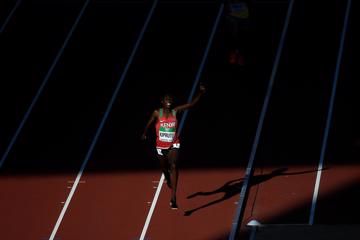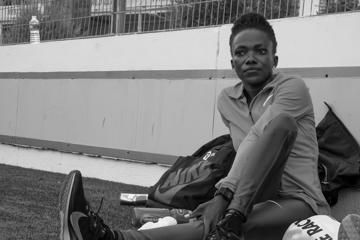David Rudisha at the 2016 Rio Olympics (© Getty Images)
I was lucky to be alive. I know that.
In August, while driving back home to Kilgoris, I was involved in a serious car accident. At the time I had already been on the road for five hours, and was only 30km from home when a bus came towards me, driving in the middle of the road.
I hit it head-on. The car was wrecked, completely written off, but somehow I was okay.
An incident like that can change your perspective, and it left its mark on me. I believe it’s another chance at life.
In a sense, that’s also how I feel about my athletics career, now that there is finally some light at the end of the injury tunnel.
The last few years have been the hardest of my life, and not only because I’ve been absent from the track. I separated from my wife, I lost my father, and all of that was so hard to take.
My father, Daniel, was a great friend, a mentor throughout my life.
Where I come from, we don’t have stadiums or tracks, so as an aspiring athlete it’s hard to get the motivation to train. But as long as I could remember, I was aware my father was an athlete. He won an Olympic silver medal in the 4x400m in 1968 and growing up, I just wanted to become like him.
He passed away in March this year and ever since he died, I find myself going home much less often. Before, I felt like I couldn’t go more than a month without returning home and I understand now that he was the reason. I’d talk with him, be with him, learn from him.
In the hardest times, you need someone like that.
The last two years were hard, not being able to do the thing that for so long defined me. While my last race was in July 2017, the root of my injury went back a full year before.
On the build-up to the 2016 Olympics in Rio, after one session I pointed to the glute muscle when I was with my physio, feeling something wasn’t right. I was doing some stretches for it that summer and it was still minimal pain, but every time I trained and raced it got worse and worse.
It was a problem in a tendon that attaches to the sitting bone, and while it was possible to run with it, I found it hard to hit full stride. In the summer of 2017, I thought it was in the past and I felt ready to defend my world title in London, but then a new problem popped up in my right leg.
The tendon issue came back again in 2018 and it was so hard to diagnose. I had a scan which didn’t detect the problem and the more I ran, the worse it got.
My manager, Michel Boeting, brought me to a doctor in the Netherlands who did a comprehensive check-up and in the end, he got to the root of the problem. He advised me to stop running until it was fully healed.
Ever since I have tried to be patient, waiting until my body is ready. It hasn’t been easy. With everything else going on in my life, the pressure sometimes got to me.
To release it I’d often hang out with friends, partying too much. It’s not something you intend to come your way but sometimes, during periods like that, you look for a bit of destruction to distract yourself.
Thankfully, I’ve got through it and I’m feeling in one piece again.
It’s tough being on the outside, looking in at your sport. Last month I travelled to Doha to watch the World Championships and as I sat in the stands, I could feel the adrenaline coming: I’d watch athletes in the 800m and I’d feel like talking to them, telling them what mistakes they were making.
Running the times I did in the past, the expectation stays with you. When I’d meet Kenyans who don’t follow the sport closely they’d tell me they’ll cheer for me in the World Championships, but it was hard to explain that I wasn’t going there to compete.
But pressure can also be good sometimes. It pushes you to be better.
I remember in 2011 there was so much weight on my shoulders for every race. Everyone expected me to run 1:41 in their meeting and it was very tough: that kind of performance isn’t possible every week.
It’s a different pressure now, but I’ve been in this position before and made it back. In 2013 I thought my career was over when I had a knee problem. It was very painful, I couldn’t even do 15 minutes of jogging. In October that year I had surgery and it wasn’t until March of 2014 that I could run again.
It’s all about staying positive, forcing yourself to see things from a different perspective. I was supported by family, friends and my coach, Brother Colm O’Connell.
In 2015 a lot of people didn’t have hope I could do something at the World Championships – I’d been beaten three times that summer – but I believed I could win major races.
This is similar. I know I need to stay on the right track and be realistic. I’ve lost two years of running and I have to be patient if I am to get back to the top.
The first step is losing weight: I’m simply not fit at the moment. I’ve always been someone who gained weight fast. During my end-of-season break I’d put on four of five kilos, and I gained about 12 kilos during this period out with injury. Once I lose a lot of that, I can start building up my training. The most important thing is that the injury is almost completely gone.
When I met the Kenyan fans in Doha, they’d tell me they’re waiting to see me back on track and beyond my own goals, I feel a responsibility to them. I promised them I will be back.
When I look back, the most perfect performance of my career was obviously the 2012 Olympic final, being able to handle the pressure and run from gun to tape in a world record.
It was special, the whole race. Behind me there were national records, area records and personal bests and I always found that in races like that, my rivals appreciated my effort.
They knew that I always gave my best when I get on the line and that I was someone who didn’t just want to win, but to run fast too. That would also benefit them.
But if I’m honest, I didn’t expect to run that fast in London. After the heats and semi-finals your energy can take a hit, so to come back after one day’s rest, it was amazing.
Even today, seven years on, my friends sometimes replay that race when we’re sitting around and it’s one everyone likes to watch – including me. The emotion of that moment comes back to me when I see the video. I’m reminded why I want to get back there again.
But the most important thing is to just stay motivated, which is not easy when I’ve achieved almost everything.
The 2020 Olympics is something I talked about a lot before my injury and despite all that has happened these past few years, I believe I’m still on track. I’ll do my best to be there.








